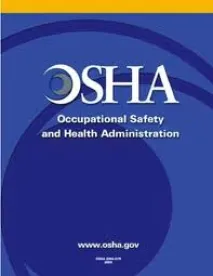The Occupational Safety and Health Administration (OSHA) released its final rule for Occupational Injury and Illness Recording and Reporting Requirements, revising the requirements for reporting work-related hospitalizations and requiring the reporting of all amputations and eye losses. Assistant Secretary of Labor for the Occupational Safety and Health Administration Dr. David Michaels cited the most recent Bureau of Labor Statistics (BLS) report that 4,405 workers were killed on the job in 2013 to emphasize the importance of this new rule.
The rule will become effective on January 1, 2015, for Federal Plan States. State Plan States will announce their dates independently, but are encouraged to meet the same deadline.
Establishments in certain low-hazard industries are partially exempt from routinely keeping OSHA injury and illness records. Under the new rule, there will be a shift in the number of industries which are partially exempt. Previous regulations used the Standard Industrial Classification (SIC) system to categorize industries; the new rule relies on the North American Industry Classification Systems (NAICS), along with injury and illness data from BLS from 2007 through 2009 to categorize an industry as low-hazard and exempt employers from OSHA recordkeeping requirements. As a result, employers in certain industries are newly required to keep OSHA injury and illness records. (A list of these new industries can be found at https://www.osha.gov/recordkeeping2014/reporting_industries.html.) The new rule maintains the exemption for any employer with 10 or fewer employees from the requirement to routinely keep records of worker injuries and illnesses.
The new rule expands the list of severe injuries that all OSHA-covered industries, regardless of size or partial exemption status, must report to OSHA. The current regulations require that when there is a fatality or three or more hospitalizations, the employer must inform OSHA within eight hours of the occurrence. Under the new rule, a fatality (within 30 days of the work-related incident) must be reported within eight hours of the death. However, employers now will have a 24-hour window in which to report to OSHA all work-related inpatient hospitalizations that require care and treatment of a single employee, all amputations, and all losses of an eye that occur within 24 hours of the incident.
The methods of reporting available to the employer also have been expanded. In addition to calling OSHA’s confidential number (1-800-321-OSHA) or contacting the local OSHA Area Office, employers will be able to go OSHA’s (not-yet-available) web portal and make a report electronically.
OSHA has stated that not all reported incidents will lead to an inspection. The agency noted, however, that hospitalization and partial body loss are significant events that indicate serious hazards are likely to be present at a workplace and that an intervention is likely warranted to protect the other workers at the establishment. OSHA also said it sees a report as opening a dialog with the employer about the incident and that whether an investigation will be opened will be case-specific. OSHA is most interested in knowing what caused the injury, what the employer intends to do as a result of the incident, and putting the employer on notice of any hazards — all of which it expects will make an employer more likely to take the necessary steps to rectify the situation. Based on OSHA’s conversation(s) with an employer, the agency indicated that it may decide to take no further action, put the employer straight into a consultation program, or conduct an inspection.
Most significant and troubling is that OSHA will make an employer’s report of all fatalities, hospitalizations, amputations, or eye losses publicly available on the agency’s website. OSHA stated that it believes that public disclosure will incentivize employers to ensure a safe workplace for their employees.




 />i
/>i
